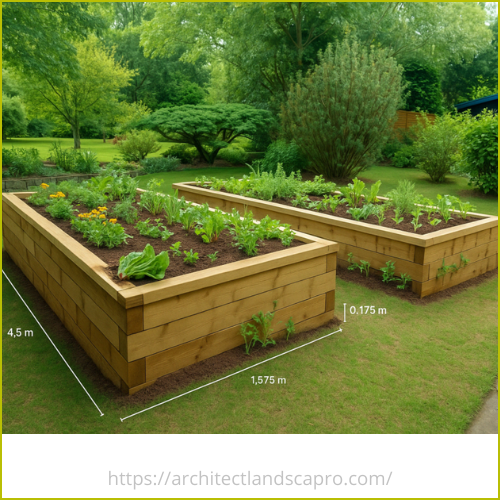Living plant fences are more than just decorative hedges — they’re multifunctional green structures that enhance privacy, support wildlife, and reduce the environmental impact of traditional barriers. From suburban yards to public landscapes, these natural fences offer an eco-conscious solution that blends beauty, function, and sustainability.
In this guide, we’ll explain everything you need to know about living plant fences — including their benefits, best plant options, design ideas, and how to create one in your own outdoor space.
What Are Living Plant Fences?
A living plant fence, sometimes called a green fence or natural hedge, is a boundary made from live plants such as shrubs, trees, or climbers. Unlike wooden, vinyl, or metal fences, these organic structures are alive — and grow over time.
There are several forms of living plant fences, including:
- Formal hedges (e.g., boxwood, privet)
- Mixed shrub borders
- Flowering fences (e.g., hibiscus, hydrangea)
- Climbing fences on trellises (e.g., jasmine, honeysuckle)
These fences are especially popular in eco-friendly landscape design because they add privacy and greenery while reducing heat, noise, and pollution.
Why Living Plant Fences Matter
Whether you’re a homeowner or landscape architect, here’s why living plant fences are an excellent alternative to hard structures:
1. Eco-Friendly Benefits
- Absorb carbon dioxide and purify the air
- Provide shelter and food for pollinators and birds
- Reduce the use of manufactured materials (concrete, PVC, steel)
2. Visual and Seasonal Appeal
- Blooming flowers and changing colors throughout the year
- More organic, vibrant, and textured than flat walls or metal screens
3. Climate Control and Noise Buffer
- Offer shade and cooling in hot climates
- Reduce wind and urban noise naturally
4. Customizable and Adaptable
- Can be trimmed and shaped to fit any space
- Work in rural gardens, suburban homes, and even modern rooftops
Best Plants for Living Fences
Your plant selection depends on climate, soil, sunlight, and the desired function of your fence. Here are some popular choices:
Evergreen Shrubs
These plants retain their leaves all year and are great for privacy:
- Boxwood (Buxus) – Dense and compact, easy to shape
- Privet (Ligustrum) – Fast-growing and resilient
- Podocarpus – A tall and tidy shrub for warm regions
Flowering Fences
Add seasonal beauty and attract pollinators:
- Hibiscus – Tropical look with large blooms
- Hydrangea – Adds volume and pastel color
- Rosa rugosa – Fragrant and resistant, good for coastal areas
Native Plants (Eco Bonus)
Using native species ensures low maintenance and supports local ecosystems:
- Temperate zones: Forsythia, dogwood, viburnum
- Dry climates: Lavender, sage, myoporum
Need more ideas? See our Top Shrubs for Low-Maintenance Landscaping.
How to Create a Living Plant Fence
Creating a living fence takes a bit more time than installing a wooden one — but the long-term benefits are worth it.
1. Define Your Purpose for Living Plant Fences
Are you trying to block views, mark a boundary, reduce wind, or just add beauty? Your goal will determine which plants and layout to choose.
2. Plan the Layout
- Measure the area and estimate how many plants you’ll need
- Leave spacing between plants according to their mature size
- Include a mix of heights and textures for visual interest
3. Prepare the Ground
- Loosen the soil and enrich with compost
- Add mulch after planting to keep moisture and prevent weeds
4. Plant and Support
- Water deeply after planting
- Use stakes or trellises for climbing plants
- Consider drip irrigation for low-maintenance watering
5. Maintain and Shape
- Prune seasonally to control height and shape
- Watch for pests or disease and treat organically where possible
- Re-mulch and fertilize annually for best results
Living Plant Fences vs Traditional Fencing
| Feature | Living Fence | Traditional Fence |
|---|---|---|
| Aesthetic | Natural, evolving beauty | Static and rigid |
| Environmental | Promotes biodiversity | Resource-intensive |
| Maintenance | Requires regular pruning | Occasional repairs |
| Cooling effect | Provides shade and airflow | No climate benefit |
| Lifespan | Grows stronger with time | Deteriorates over time |
Sustainability and Community Value of Living Plant Fences
Living fences contribute to greener cities and more resilient ecosystems. In urban areas, they:
- Improve stormwater absorption
- Replace impervious fencing with permeable planting
- Encourage wildlife corridors and greener streetscapes
They’re especially effective in schoolyards, parks, community gardens, and along sidewalks — where they replace walls with life.
For more eco-friendly tips, visit EPA WaterSense Landscaping.
Final Thoughts – Living Plant Fences
Living plant fences are a smart, sustainable, and visually stunning way to shape outdoor spaces. Whether you’re designing a private backyard or transforming a public greenway, these natural barriers provide long-term value — for people and the planet.
With the right plants and a little care, your living fence can offer shade, privacy, wildlife support, and beauty all year long.
For more : Landscaping 101.
Hanging Gardens of Babylon.

